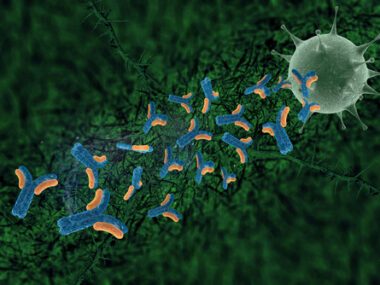Plasma Exchange May Help Diagnose Autoantibody-negative LEMS Cases
Case study: Therapy eased symptoms of patient without detectable antibodies
Written by |

Plasma exchange therapy eased the symptoms of a man with Lambert-Eaton myasthenic syndrome (LEMS) who tested negative for disease-related autoantibodies, according to a case series study.
Researchers noted that a diagnosis of LEMS often relies on the presence of autoantibodies — immune proteins that mistakenly target a person’s own tissues or organs — in the bloodstream. Thus, plasma exchange may help identify those with LEMS and similar autoimmune conditions who lack detectable autoantibodies.
Further studies over time are needed to determine the value of plasma exchange as a diagnostic tool, the team said.
The study, “Total Plasma Exchange in Neuromuscular Junction Disorders — A Single-Center, Retrospective Analysis of the Efficacy, Safety and Potential Diagnostic Properties in Doubtful Diagnosis,” was published in the Journal of Clinical Medicine.
The neuromuscular junction, called NMJ, is a specialized synapse — a tiny gap between the end of a nerve fiber and the muscle fiber it controls. In response to an electrical impulse, the end of the nerve fiber releases the signaling molecule acetylcholine, which crosses the gap, and binds to acetylcholine receptors on muscle fibers, triggering muscle contraction.
Myasthenic diseases are a group of conditions in which NMJ function is disrupted.
LEMS is a myasthenic disorder in which self-reactive antibodies, or autoantibodies, target and damage a protein found within nerve fiber endings at the NMJ, reducing the release of acetylcholine. As a result, people with LEMS experience symptoms of muscle weakness, mainly in the lower limbs.
Myasthenia gravis (MG) is a similar autoimmune condition whereby autoantibodies primarily target the acetylcholine receptor on the muscle side of the NMJ. Here, muscle weakness symptoms can be limited to the muscles controlling eye and eyelid movements, or more widespread and affect other muscle groups in the body.
Blood tests to find harmful autoantibodies can support the diagnosis of these conditions, but some patients test negative for these self-reactive antibodies. Such negative test results can delay a patient’s diagnosis — and treatment.
Plasma exchange, also known as plasmapheresis, is commonly used as a treatment in autoimmune diseases, including LEMS. It works to help ease symptoms by removing the harmful autoantibodies circulating in the bloodstream.
During treatment, a patient’s blood is circulated through a machine containing a cell separator, and then returned to the body in replacement plasma.
A potential diagnostic tool
Researchers at the University of Duisburg-Essen, in Germany, wondered whether a response to plasma exchange could be used to support a LEMS or MG diagnosis in autoantibody-negative patients.
To find out, the team used the database of a local neuromuscular diseases treatment center. A search showed that, of 303 patients who presented with myasthenic symptoms, 20 (6.6%) received plasma exchange.
Among them, two men, ages 54 and 77, had LEMS — and one had tested negative for LEMS-related autoantibodies. Both of these individuals had received treatment with steroids and the immunosuppressant azathioprine. They also had been given Firdapse (amifampridine), a medication that aims to increase the amount of acetylcholine released from nerve cell endings.
The LEMS patients also received intravenous immunoglobulin (IVIG) replacement therapy, which is designed to suppress the production of autoantibodies and minimize their harmful effects.
Most of the remaining participants had MG, five of whom were autoantibody-negative, while two had different NMJ-related disorders and also tested negative for autoantibodies.
The analysis showed that plasma exchange eased symptoms for 11 of the 20 participants. Among them, both LEMS patients, including the 77-year-old man without detectable autoantibodies, reportedly improved.
In contrast, of the eight patients who did not improve, seven were autoantibody-negative, including six MG patients and the other two individuals with NMJ disorders.
Regarding safety, changes in clinical tests during plasma exchange were not considered clinically relevant. These included drops in arterial blood pressure, as well as in the percentage of red cells in the blood, the levels of hemoglobin — the protein in red blood cells that is responsible for transporting oxygen — and fibrinogen, a blood clotting factor.
“This study justifies conducting a prospective trial, evaluating whether [plasma exchange] can help to confirm or even reject a diagnosis in patients with myasthenic symptoms,” the researchers concluded.






